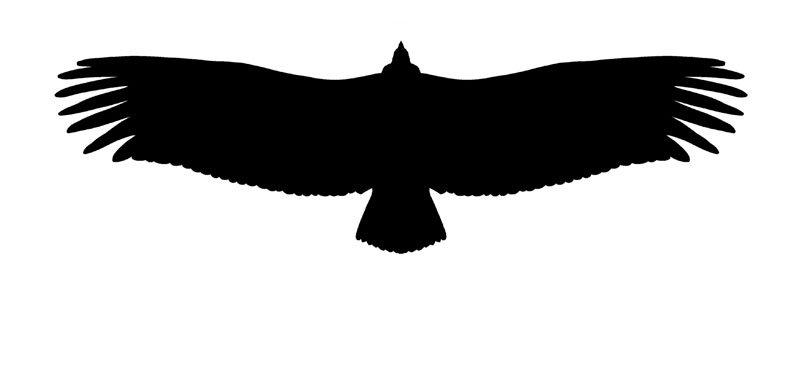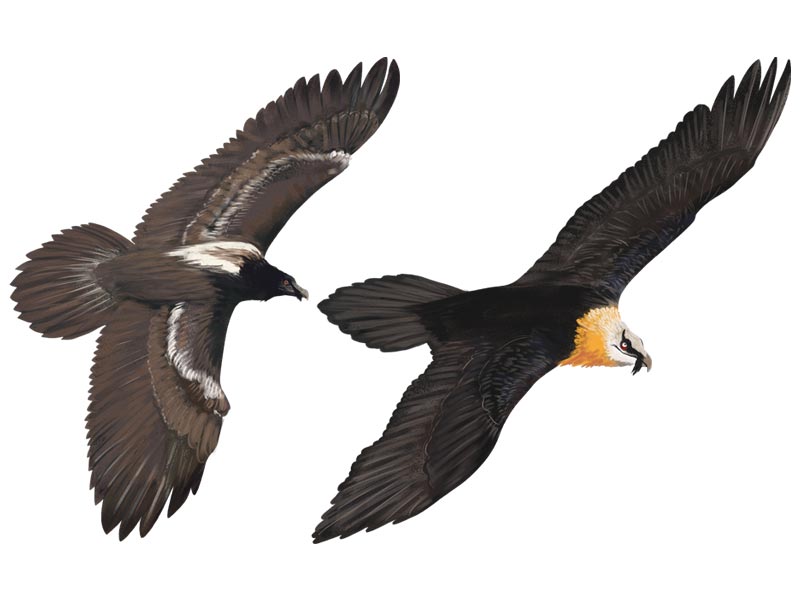With a little knowledge, bearded vultures can be easily recognised in the field. It is often even possible to tell whether it is a young or already sexually mature bearded vulture.
In flight, bearded vultures are unmistakable due to their size (wingspan up to 2.90 metres), their strikingly long and narrow wings and their long wedge-shaped tail.

Bearded Vulture Observation – Identification
A colourful transition
The bearded vulture changes its appearance throughout its life. As a young vulture, it is predominantly black/dark brown. From about four years of age, the plumage on the head, breast and belly gradually becomes white. From this point on, the bearded vulture regularly visits waterholes to bathe in iron-rich mud. These long baths in the red mud give the bird its characteristic red colouring. The reasons for the bearded vulture's behaviour are not fully understood. It is thought that they bathe in the mud for aesthetic reasons and to care for their plumage. It is also possible that the mud protects the egg from infection.
Report an observation
Have you been lucky enough to spot a Bearded Vulture? We would love to hear about your observation! Your report is invaluable to the success of our monitoring program. With your information, we may be able to identify the individual you saw and obtain basic data on the survival of Bearded Vultures in the wild.
Click here to go directly to our Notification form >>


![[Translate to en:] Silhoutte Bartgeier](https://www.naturpark-oetztal.at/fileadmin/userdaten/Bilder/galerie_800x600px/tiere/Voegel/bartgeier/Silhouetten_Bartgeier.jpg)

![[Translate to en:] Silhoutte Steinadler](https://www.naturpark-oetztal.at/fileadmin/userdaten/Bilder/galerie_800x600px/tiere/Voegel/bartgeier/Silhouetten_Steinadler.jpg)
![[Translate to en:] Silhoutte Kolkrabe](https://www.naturpark-oetztal.at/fileadmin/userdaten/Bilder/galerie_800x600px/tiere/Voegel/bartgeier/Silhouetten_Kolkrabe.jpg)

![[Translate to en:] Bartgeier ©Stefan Plangger](https://www.naturpark-oetztal.at/fileadmin/userdaten/Bilder/galerie_800x600px/tiere/Voegel/bartgeier/bartgeier3_c_stefan_plangger.jpg)







